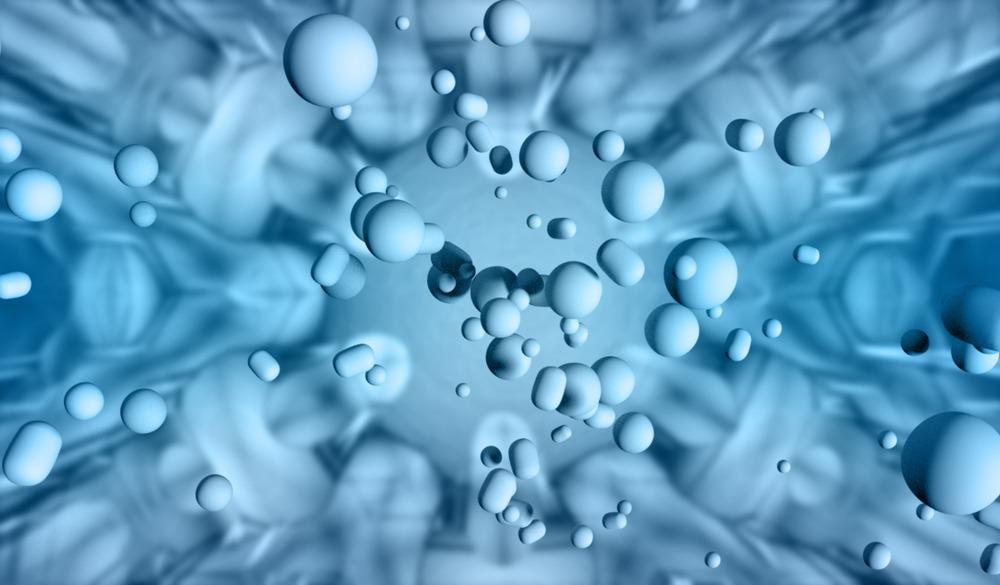In an article published recently in the journal Scientific Reports, a unique infinity-shaped reactor with spiral continuous flow was proposed to produce nanoparticles using continuous hydrothermal synthesis.

Study: A novel spiral infinity reactor for continuous hydrothermal synthesis of nanoparticles. Image Credit: GiroScience/Shutterstock.com
The Era of Nanotechnology
Due to their remarkable physicochemical features, nanoparticles (NPs) are extensively used in multiple sectors, including the energy, chemical, electronics, water, and medical fields. There is increasing interest in the scalable manufacturing of NPs with precise criteria to render them viable for various uses.
Hydrothermal Synthesis Could be the Key to Commercial-Scale Fabrication
While fabrication mechanisms for different NPs, like sol-gel, precipitation, spray pyrolysis, microemulsion, flame synthesis, thermal decomposition, and hydrothermal synthesis, have been illustrated successfully in a lab setting, commercialized fabrication of NPs of numerous substances continues to be a challenge.
Hydrothermal synthesis has lately gained popularity because it uses affordable substrates and mild processing conditions while giving more adjustability and resilience in particle characteristic control.
While supercritical water (SCW), a vital reagent, is employed at high temperature and pressure, these circumstances may well be deemed mild compared to procedures such as flame synthesis and combustion-based gaseous phase synthesis, which run at temperatures near to the adiabatic flame temperature.
Addressing the Weaknesses of Hydrothermal Synthesis
Batch-wise stirred tank reactors are often used for hydrothermal synthesis. It is hampered by sluggish heating speeds combined with extended processing periods, resulting in inadequate control over the characteristics of produced NPs.
Continuous Hydrothermal Flow Synthesis (CHFS) caters to some of the difficulties of batch-wise processing. It also has the potential to lay the groundwork for continuous and commercialized fabrication of NPs with greatly configurable nanoparticle features like size, composition, and crystallinity.
Reactor Design and Process Control
Tube-like reactors, confined jet reactors, vertically aligned nozzle reactors, cross mixers, T-mixers, counter-current mixers and vortex driven mixers are some of the apparatus designs suggested by various research teams for mixing and continual synthesis of NPs.
Aside from design, operational control is a major difficulty for assuring process dependability and repeatability. The technique used to combine the metallic salt solution (MS) and supercritical water substantially impact mass and heat transference speeds, nanoparticle properties, and product uniformity.
Highlights of the Study
For the scalability of sustained NP synthesis using the hydrothermal technique, a unique infinity reactor was presented. Using a combined CFD-PBM, the effectiveness and practicality of the system for sustained NP production were verified.
The mixing performance, heat transmission, reaction kinetics, and nanoparticle creation inside the infinity reactor were examined under various operational settings. Inside the reactor, the temperature, fluid flow, and density fields displayed three separate modes: decline, recovery, and stable flow patterns. The duration of each one of these modes was shown to be substantially influenced by the flow ratio between the reacting species.
Salient Features of the Infinity Reactor
The suggested infinity reactor concept capitalizes on the differential in density among SCW and MS solutions. In this concept, an anti-clockwise spiral rotation follows a clockwise spiral rotation, which changes the fluid flow path as well as the centrifugal force fields. The team theorized that the oscillating force field would cause intensified blending among the reagents, particularly when the density differential is large.
Spiral paths have excellent heat transference properties compared to straight paths due to secondary streams that function in the plane perpendicular to the primary flow path, amplifying fluid blending and heat transference effects.
Important Takeaways
The fluid blending and chemical processes assessment indicated that the proposed reactor offers two distinct reaction settings: a plug flow reactor that follows an initial combined flow reactor. The quick blending in the combined flow region guaranteed that concentration and temperature uniformity was rapidly attained, assisting the quick chemical processes, and the succeeding plug flow region permitted homogeneous settings for particle size distribution (PSD) development.
The proposed reactor was shown to offer the necessary physicochemical conditions for producing NPs with precise control over nanoparticle properties. The flow ratio was discovered to be an important element in affecting the production and properties of the NPs.
Further study is required to investigate the practical creation of NPs in the infinity reactor.
Reference
Pukkella, A., Nadimpalli, N., Runkana, V., & Subramanian, S. (2022). A novel spiral infinity reactor for continuous hydrothermal synthesis of nanoparticles. Scientific Reports, 12. Available at: https://www.nature.com/articles/s41598-022-11141-8
Disclaimer: The views expressed here are those of the author expressed in their private capacity and do not necessarily represent the views of AZoM.com Limited T/A AZoNetwork the owner and operator of this website. This disclaimer forms part of the Terms and conditions of use of this website.